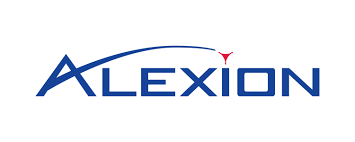Axial - Alexion
Surveying great inventors and businesses
An offspring of Regeneron and its culture is a company called Alexion. Like Regeneron, Alexion was formed around scientific integrity and a owner culture and ended up transforming the lives of patients with atypical hemolytic uremic syndrome and paroxysmal nocturnal hemoglobinuria (a horrible disease where the body attacks and kills a patient’s own red blood cells).
Key lessons are:
Focusing purely on large markets is a mistake. Pursuing opportunities that seem small can actually generate high levels of value due to lower competition and long-term expansion enabled by new tools or laws.
Alexion helped pioneer the rare disease business model. Their business was enabled by new technology (recombinant biology), new regulations (Orphan Drug Act), and better ways to acquire patients (close partnership with Leeds Hospital).
Founded in 1992 by Leonard Bell and Steven Squinto. Steven was dating the best friend of Leonard’s wife. They both got to know each other this way; there are actually several examples of founders meeting each other through mutual/overlapping dating relationships. Leonard was a professor at Yale and Steven was a director at Regeneron. On a trip to get ice cream, Leonard confided his desire to start a company with Steven, his closest friend with industry experience. His idea was to find drugs that inhibit complement, a set of proteins important in the innate immune system. The premise was to block complement to treat autoimmune disease. Finding space in New Haven at the Science Park incubator, the founders set off to raise their first round:
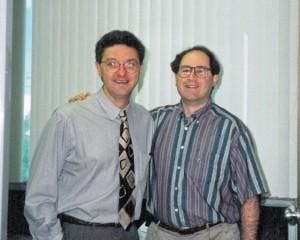
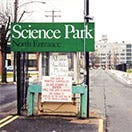
Source: Alexion
Funding was hard to come by especially in the back drop of clinical failures piling up in biotechnology in the 1990s. The company was near death until the founders found a deal to work with US Surgical to develop complement inhibitors to make pig organs more capable to be transplanted into humans. Alexion received $5M to do the work and with a little help from Connecticut scaled up their lab to design and manufacture biologics against complement.
On the heels of creating a monoclonal antibody that blocks complement, a year’s worth of intense work where runway was no more than 6 months at best, Alexion went public raising $21M. The story was to commercialize the antibody against a wide variety of diseases from rheumatoid arthritis to heart disease.
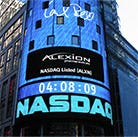
Source: Alexion
The antibody’s commercial name is Soliris and would end up becoming one of the world’s best selling medicines. But in 1997, it was not clear that Soliris would be a blockbuster. Trials in rheumatoid arthritis, kidney disease, and heart disease all failed. Alexion’s stock did not move and stayed at around 2 bucks per share.
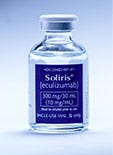
Source: Alexion
The key breakthrough for Alexion was not based on technology but on a unique business model. Convention suggests the large markets are the only ones to pursue. If they don’t have a billion or a trillion next to it, the market probably is not worth going into. However, smaller markets often have less competition, can quickly expand through a new technology or law, and can act as a beachhead to pursue more markets over time. The founders of Alexion were having some trouble in larger indications but still had an antibody against complement that acts across a very wide-range of diseases. A company without a strong culture and incentives probably would just give up here or double down on the RA program.
However, Bell and Squinto kept at it. They searched for diseases where complement activity is increased in the hopes that their medicine could help. They found one, paroxysmal nocturnal hemoglobinuria (PNH), where the body’s immune system kills its own red blood cells. PNH is a very rare disease with an incidence rate of 1 per million patients. The team sought out Peter Hillmen in the UK, who ended up playing an instrumental role in the approval of Soliris for PNH, a hematologist with a focus on PNH at the Leeds Teaching Hospital. With an initial collaboration with Hillmen, the Alexion team became convinced that the underlying scientific match between their antibody and PNH was incredibly strong.
The next step was figuring out if PNH was worth pursuing. Is the market big enough? How much would Alexion need to charge for its medicine? How many patients for the trial could be found? The rare disease model became viable after the passing of the Orphan Drug Act (ODA) in 1983. In the US, this gave drug companies the incentive to develop treatments for rare diseases providing:
A tax credit for 50% of clinical trial costs
Sever years market exclusivity
Research grants
This incentivized a several companies to initiate trials for rare diseases - only 10 drugs approved prior and hundreds of trials initiated closely afterwards. In 1994, Genzyme had gained approval for a drug called Cerezyme in Gaucher disease, an incidence rate of 1 per 100K patients. By 1997/1998, Cerezyme was generating $100Ms in sales. Despite all of this, Bell was still very skeptical of pursuing PNH. The market was still too small where PNH could be consider ultrarare; an order of magnitude smaller than Gaucher disease in terms of patient population and the rare disease business model was not very fashionable in the 1990s/early 2000s.
Bell and the team decided the start a trial in PNH as a way to validate their technology in the hopes that they would figure out a way to find a drug against a larger indication. The first eleven PNH patients were dosed with Soliris in Hillmen’s hospital in 2002. Alexion’s stock was hovering around $4 per share. In 2004, they published a seminal paper in the NEJM. After dosing another 140 patients, Soliris was approved for PNH in 2007.
The next step was figuring out pricing. In the 2000s especially when compared to now, the upper limit for a drug’s price was often $200K. Now drugs are have a price tag of $1M. Alexion took a bold and aggressive position to charge $390K for Soliris out of the gate. On a side not, buying drugs and jacking up their prices is immoral or automatically raising drug prices 10%-20% per year is an admission that a company has nothing left in the tank. But pricing a drug very highly at the very beginning is really risky. Clinicians might not prescribe patients the medicine and insurers might not reimburse for it. The bar for high-quality data is definitely higher for a medicine set at a high price from the start.
Soliris had the data package to convince the market to pay such a high price. This can be retraced all the way to the mid-1990s where Bell, Squinto, and the team were trying to figure out the best scientific match for their antibody. Maybe squeezing out an approval in RA somehow wouldn’t have enabled Alexion to build a similarly large business. In drug development, data matters a lot for clinicians and payors. Approval is just a step in the process.
Soliris generates billions of dollars of annual sales providing a transformational improvement in quality of life for the thousand PNH patients around the world. In 2011, Soliris was approved in another ultrarare disease, atypical hemolytic uremic syndrome where complement overactivation leads to severe kidney damage.
Alexion is a business model pioneer. Two decades ago, the idea of treating a small patient population and having the ability to charge high prices was not obvious. Enabled by new regulations and an early success in Genzyme, Alexion transformed the lives of hundreds of patients and moved the field forward to a place where all business models become N-of-1. With a strong owner culture, likely influenced by Regeneron - a company who pioneered 50/50 deals, Alexion stuck out numerous clinical failures and led by scientific rigor found a large opportunity. Unlike so many other life science companies, Bell and Squinto led the company through the entire journey. The story is incredible but the various struggles may have led to the company’s recent fate. Alexion was maniacally focused on getting Soliris approved in at least one indication that they did not focus on technology/pipeline development. After Soliris’ first approval, Alexion went on a bit of a buying spree to fill its product pipeline. In retrospect the founder’s did the most important task to get a successful drug approved but lost a little sight on investing in the underlying platform. Given more time, the founders probably would have righted the ship - they definitely had the capital. However, when Elliot shows up on your doorstep, something is going to happen. Bell ended up leaving. Alexion is essential a descendant of Regeneron’s culture and the power of its decisions showed. The founders of Alexion built an incredible franchise. A business model pioneer, Alexion shows the power of scientific integrity and great founders and the need to always invest in new technologies and products.

